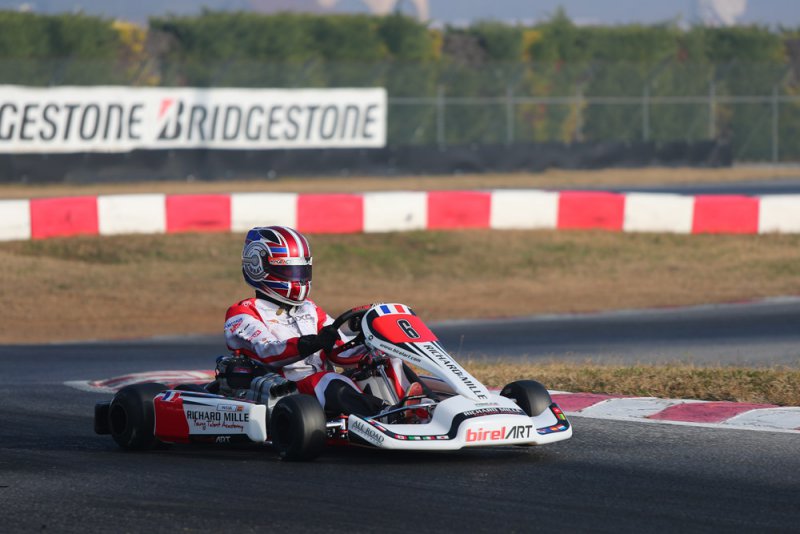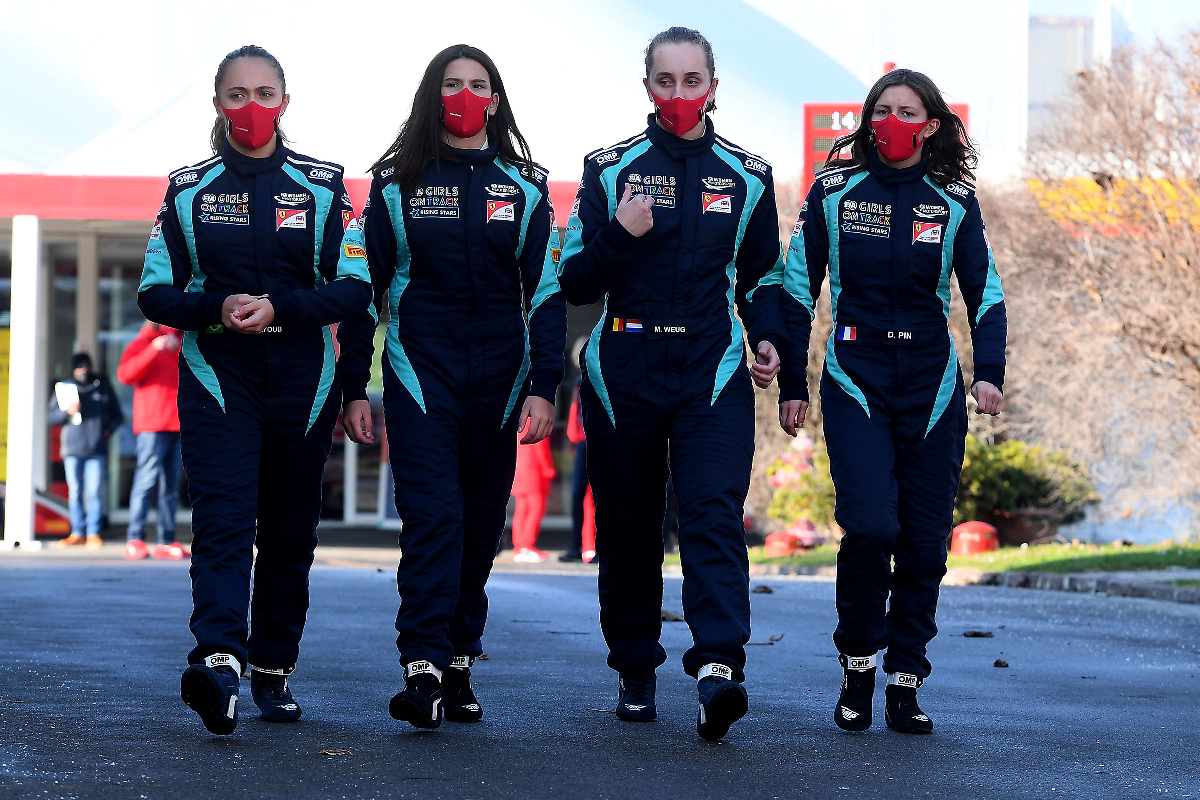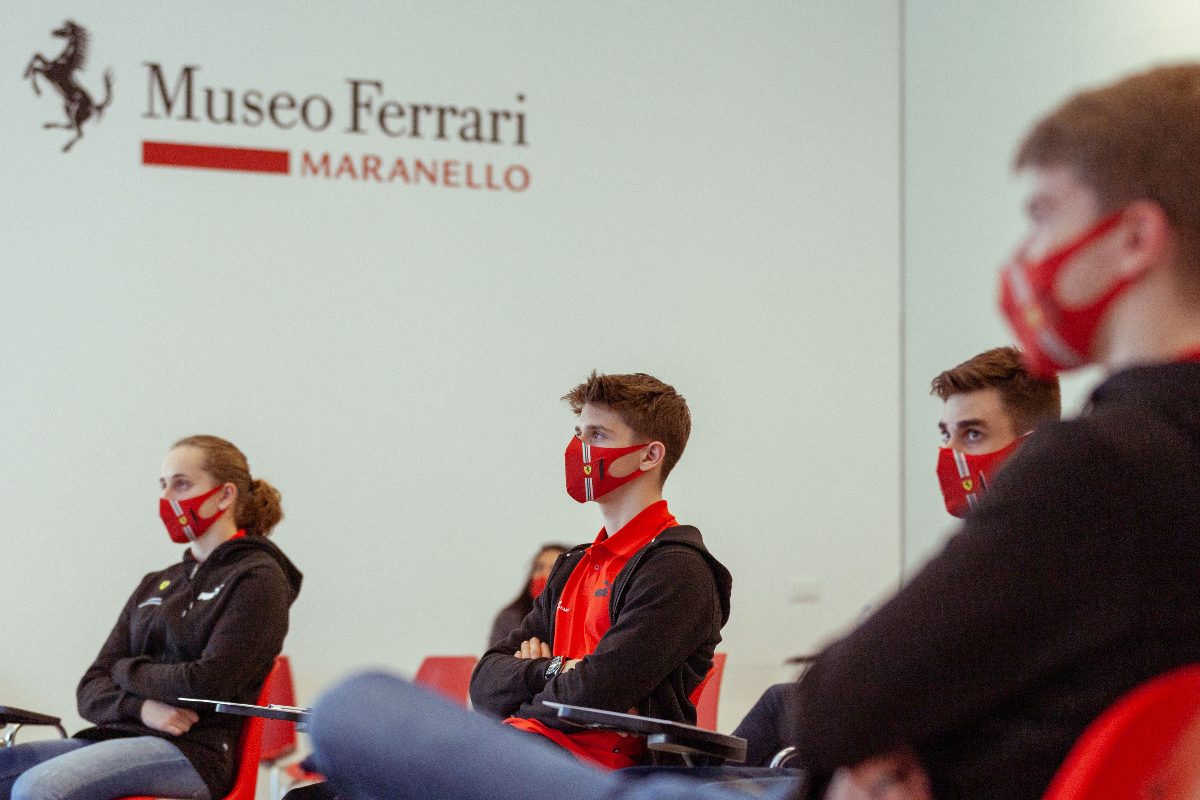
Photos: Ferrari Driver Academy
The tie-up between the FIA Women in Motorsport Commission’s Girls on Track Rising Stars programme and the Ferrari Driver Academy is a long-term alliance with aims that go beyond finding future Formula 1 stars
This week it was announced that new Ferrari Driver Academy member Maya Weug will race under the Iron Dames banner for Italian Formula 4 team Iron Lynx. She is the first winner of the FIA Women in Motorsport Commission’s Girls on Track Rising Stars programme, which teamed up with the FDA’s global scouting infrastructure last year on a talent-finding mission.
A longlist of 20 female drivers aged between 12-16 was decided upon last June, and tests in karts and then Formula 4 cars were used to whittle that list down to four drivers who would compete for the chance, subject to meeting an assessment standard, to race in F4 as a Ferrari junior. The eventual winner, Weug, gave Formula Scout some insight on the whole process.
“I had ambitious expectations despite the level of the other 19 girls being very high,” says Weug, who was born in Spain to Dutch and Belgian parents.
“We did a lot of different assessments apart from the on-track activities. We had mental assessments, physical assessments, simulator sessions and technical training. The first shootout and training camp were based on karting, and training camp two and the last round in Maranello were with the Winfield Racing School F4, first at the Paul Ricard circuit and then at Fiorano for the final session.
“There is a big step between karting and F4 but I enjoyed it a lot immediately and I built up my confidence with the car every time I went out on track. The biggest differences are the braking, the weight transition and the way in which aerodynamics work.”
The various Girls on Track Rising Stars commitments weren’t Weug’s only focus in 2020, as she also continued her successful karting career as a factory Birel ART driver.

Photo: Birel ART
“In the 2020 season, I was a lot more competitive than I was the year before, being in the top three in a lot of the heats of the European Championship and the WSK series.
“Working with the Birel ART factory team helped me to develop a more professional approach to a race weekend. In the FIA WiM training camps I learned a lot about mental and physical preparation for a race weekend, which definitely helped me in my kart races.
“There were many different challenges [in Rising Stars], firstly staying fully focused while you are competing for such a big opportunity,” Weug adds.
“The most mentally challenging was the mix of a really busy racing schedule with the European and the World Championship karting together with the Rising Stars selection process. Travelling to all the venues on time was almost impossible and the COVID-19 restrictions made everything extra tricky.
“We had to drive through the night a few times, from one country to the next, just to make it to the track on time. I improved my driving a lot in F4 thanks to all the advice from the coaches at the FDA.”
Weug, also backed by Richard Mille, came 12th in the WSK Euro Series and 17th in the CIK-FIA European Championship for OK karts in 2020. She was one of 36 to make the final of the World Championship, but didn’t finish after a nasty crash.
“I was very impressed by the overall level of the four girls,” Ferrari sporting director Laurent Mekies said of the finalists.
“I think it was clear very early on in the detection programmes when the FIA did the first runs already on selection that the level was very high. When these four girls spent that week in Maranello and we evaluated them, we certainly started to think with our partners how we could do more, and we think it’s only the very first step.”
 Alongside the announcement of Weug’s programme for 2021, long-term agreements have been signed with the FIA and the Iron Lynx racing team to support even more young drivers as Ferrari juniors going forward to 2023, meaning at least three more drivers could get to follow in Weug’s footsteps and join the academy.
Alongside the announcement of Weug’s programme for 2021, long-term agreements have been signed with the FIA and the Iron Lynx racing team to support even more young drivers as Ferrari juniors going forward to 2023, meaning at least three more drivers could get to follow in Weug’s footsteps and join the academy.
“If you look at the bigger picture, Ferrari has been in F1 since the very beginning and it’s been 70 years now, hopefully it will be there for a very long time, and as a result we deeply care about the future of our sport, about its capacity to get people all over the world to embrace it,” Mekies said in an explanation of how he aims to have Girls on Track Rising Stars benefit Ferrari beyond finding its next winning driver.
“And this programme is helping us doing that, it’s helping us ensuring that we are going to engage with a broader audience, that they are going to be interested in the value of our sports, and that more and more people, more and more women tomorrow will be a fan of F1 and hopefully a fan of Ferrari.”
Sales of Ferraris in several international markets dropped massively in 2020, unsurprising given the economic and lockdown impact of the coronavirus pandemic, and means there are less eyes on its brand on the road. It was quick to shut down its manufacturing facilities when the new world arrived too.
But looking at total sales and revenue, and how it was able to restart its F1 and automotive manufacturing so efficiently and safely in one of Italy’s COVID-19 hotspots, Ferrari’s overall picture coming into this year was a position most manufacturers could only dream of. Brand exposure is everything, and despite going to the lengths of even putting its name on F1’s debuting Tuscan Grand Prix, it has actually been its single-seater’s performance that have been letting the brand down.
 “The partnership we have with the FIA and with the Girls on Track programme is a lot more than just looking at the next female F1 driver,” added Mekies.
“The partnership we have with the FIA and with the Girls on Track programme is a lot more than just looking at the next female F1 driver,” added Mekies.
“Of course it will already be fantastic if we can get that result in the next few years, I’m sure we’ll all realise that it’s an incredible achievement, and for us by looking at the level of the girls already on the very first year it might happen rather earlier than later. But there is another dimension to it. I think the other dimension of this partnership is that we are going to try to generate enough interest, enough excitement for more women around the world to get involved with our sport, of course as a driver, but also as part of the broader motorsport community, as team members, and of course as fans tomorrow.”
While the sentiment is fine, Ferrari (along with Red Bull Racing and Williams) failed to respond to a recent ESPN survey that asked how many women hold senior team roles and what percentage of the workforce at the factory and at the track is female.
“So the operative is that number increases years and years going on with our project,” Mekies continues. “Now, when we had the first discussions with the FIA – I think it was about two years ago now when we first spoke with [WiM commission president] Michele Mouton and [Iron Dames manager] Deborah Mayer – I think both parties understood straight away that there was a huge potential for synergies between what the FIA was trying to achieve and the Scuderia Ferrari values.
“We straight away got an incredible support from FIA president Jean Todt, and here we are two years on. So later, we transformed together this vision, these ambitions, into fact.”
The person in charge of turning those ambitions into fact on a day-to-day basis is FDA’s enthusiastic leader Marco Matassa, who has admitted he’s been reminded of Charles Leclerc – who the FDA took from GP3 to a seat with the Scuderia – by Weug.
“We have to consider that for us, being a driver is within the DNA of a person. No matter being male rather than female, it’s absolutely the same. This DNA belongs to a driver,” said Matassa.
 “Charles was the first FDA driver to successfully complete the path bringing from junior categories to F1 with Scuderia Ferrari. So for this reason it’s normal and logical to consider him as a touchstone for us.
“Charles was the first FDA driver to successfully complete the path bringing from junior categories to F1 with Scuderia Ferrari. So for this reason it’s normal and logical to consider him as a touchstone for us.
“One of the four girls, in one specific discipline during this camp, she actually scored the overall highest ranking of all our scouting camp in history.
“For us the scouting process if of paramount importance, and our biggest challenge is to be able to discriminate the raw talents from the precocity. This is quite a tricky part and challenging part. For this project, we have applied the same criteria we are normally using during the scouting camps of the [predominantly] male karting drivers.
“During these camps, we obviously evaluate the skills of each driver on track, but especially also outside the track. So topics like the physical condition, the mental capacity, the nutritional habits, the communication skills, are all examples of our scouting process.”
Mekies also touched on the human side of the FDA’s mission with FIA WiM, adding: “We believe we can develop raw talent, we can develop drivers as being individuals, and we are aware of our responsibility when we try to do that with young people.”
For 2021, Weug isn’t the only recipient of a drive from the Rising Stars programme as South Africa’s Tyler Robinson will get to race in the CIK-FIA Karting Academy Trophy and Weug’s fellow finalists have got to test one of Ferrari’s GT3 cars.
Now that Ferrari has already committed to having two women in its driver development programme in 2022 (using the same principles as applied this year), and already has a seat in F4 earmarked for each of them, it has to be a matter of when not if its F1 rivals start to make similar moves.
Further reading
Why Alpine’s new academy is more ‘restructure’ than ‘rebrand’
Formula Regional Americas and US F4 diversity scholarship victors revealed
Myles Rowe named as first driver of African American-led Force Indy USF2000 team
The latest news from W Series